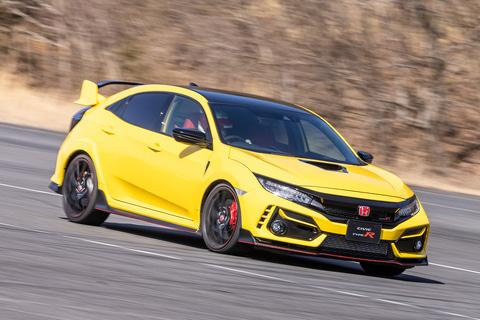Yasuo Kusakabe's history of Honda "Civic" exploration [Part 2]
The first Civic of the whole body was born in 1972
Honda, which had been struggling to enter the small car market, was the first to succeed in the "Civic." Honda, which suddenly became a wind-up child with the entry of F1 and sports cars such as the "S600", made the world stunned by its elaborate mechanism and high power engine that overturned common sense, but it is open until the appearance of Civic in a small car crowded with powerful cars. There was no such hit.
While popular cars such as the "Corolla" and "Sunny" were used as orthodox FR 3-box sedans, the Civic debuted in FF with a 2-box style 2-door + trunk. It was in 1972 that one of the whole body was born by developing a wheelbase longer than other companies, a large interior, and a highly practical engine.
Until then, Honda has consistently been good at high-speed / high-output engines, and the first small car "Honda 1300" was an air-cooled 4-cylinder FF and a delicate dry sump engine was just a craft, but it did not lead to sales. rice field. The Civic was created with an emphasis on practicality and fuel efficiency based on that reflection. A compact car with an independent trunk that can accommodate four adults has become a fashion trend for young people.

The CVCC engine, which cleared the North American emission regulations and the Muskey Act that shook the world's automobile manufacturers, was developed, and the fact that it was first installed in the Civic made the Civic an epoch-making car in history. In North America, it became popular as a fuel-efficient compact car that can use regular gasoline, and CVCC's lean-burn technology received high praise worldwide. After that, Civic will become a CVCC engine for all models. The CVCC system, which has an auxiliary combustion chamber, did not become widespread in the development of the three-way catalyst, but Honda's achievements are great.
Still, Honda and sports are synonyms. There was a high demand for a sporty Civic, and in response, RS appeared in 1974, two years later. The explanation was Road Sailing instead of Racing Sport. There are various speculations, but I think Honda was hesitant to add Racing to models that do not have a high-power engine.
However, the sports spirit is Honda DNA, Civic also participates in rallies and races with the hands of Honda teams, especially the employee team Yamato Honda participates in the fierce battle minor touring car race crowded with Corolla and Sunny, and the speed is fresh. I was shocked.
The first Civic, which debuted in 1972, pioneered a new market called the FF2 Box as a basic car for people all over the world when the 4-door sedan was the mainstream. The interior of the first Civic equipped with the CVCC engine, which was the first in the world to clear the so-called Musky Act, which is said to be the strictest emission regulation in the world. Hatchbacks (2-door, 3-door, 4-door, 5-door) and vans (commercial vehicles) are available as body types. The price at that time was 425,000 to 971,000 yen (excluding tax).With the full model change to the "Super Civic" (2nd generation), which was upsized in 1979, the texture of the interior and exterior has improved significantly. Since the design follows the original Civic, it was not fresh, but the ride quality was improved and it became much easier to ride. A Civic one-make race was held from this Super Civic, and many journalists and amateur drivers participated. Participation costs were reduced because it was a one-make, and it was great that many drivers opened the door to the race.
Super Civic (2nd generation) that appeared in 1979. The popular first generation has been completely improved to further improve economic efficiency, comfort, maneuverability, and quietness. In addition to the hatchback, a 4-door sedan and a 5-door station wagon have been added to expand the variation. The Super Civic (2nd generation) has a 4-cylinder 1.3-1.5-liter CVCC-II engine-equipped Super Civic (2nd generation) interior. Batchbacks (3 doors, 5 doors), sedans, station wagons (country), and vans (commercial vehicles) are available as body types. The price at that time was 721,000 yen to 1,194,000 yen (excluding tax)As you can see, Honda's model change is a keep concept design following the second generation, and at this time it is customary to change completely from the third generation.
